True or False: A body harness used in a personal fall arrest system must have the attachment point located in the center of the wearer’s back.
OSHA requires the attachment point of a body harness that is used in a personal fall arrest system to be located in the center of the wearer’s back near shoulder level or above the wearer’s head. Note that this requirement doesn’t apply to positioning systems or fall restraint systems.
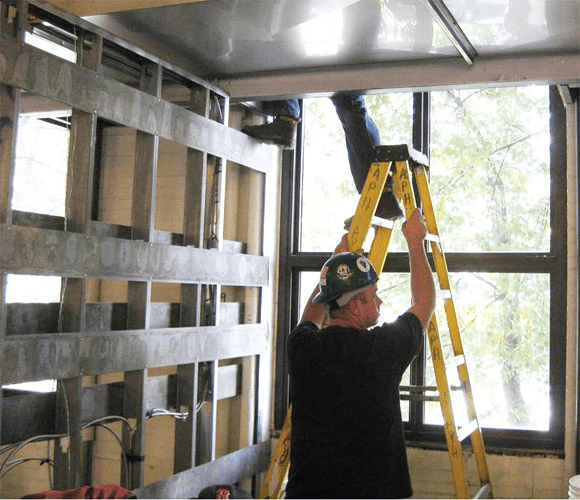
What is the worker at the bottom of the ladder doing incorrectly?
Unsafe posture. Worker should be facing the ladder and on a lower rung. A taller ladder facing the opposite direction may be necessary.
True or False: Roof anchors with rust on them are not required to be removed from service, so long as there are no other deficiencies (i.e. cracks).
False.
How often should a user inspect their own personal fall protection harness?
Before each use
After a worker has taken a fall on their personal fall arrest system, it:
a) Is allowed to be continued to be used if it is clean.
b) Must immediately be removed from service.
c) Shall be praised for preventing further injury.
d) Can be given to an entry-level employee.
b) must immediately be removed from service
True or False: You can work from the tallest rung of a ladder, so long as you have someone stabilizing the ladder at the bottom
False. Workers should find a taller ladder.
True or false: anchors don't have to be above you so long as you have another form of fall protection.
false.
True or False: fall protection is required at heights of over 4 feet while working over dangerous equipment or machinery
False: OSHA requires that fall protection be provided when working over dangerous equipment and machinery, regardless of the fall distance.
What deficiencies should a harness inspector look for while checking the straps?
fraying or discoloration on the webbing; cuts, or burns on the straps
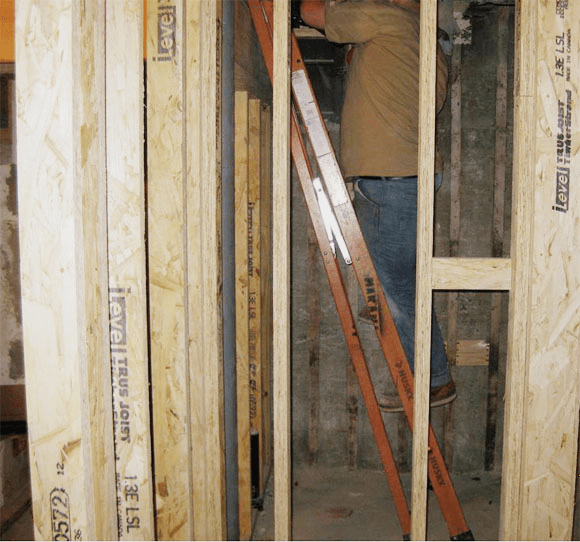
What is wrong with this photo?
Ladder is placed incorrectly. Ladder should be extended out with its spreaders locked. If the work area is too small, an alternative should be used.
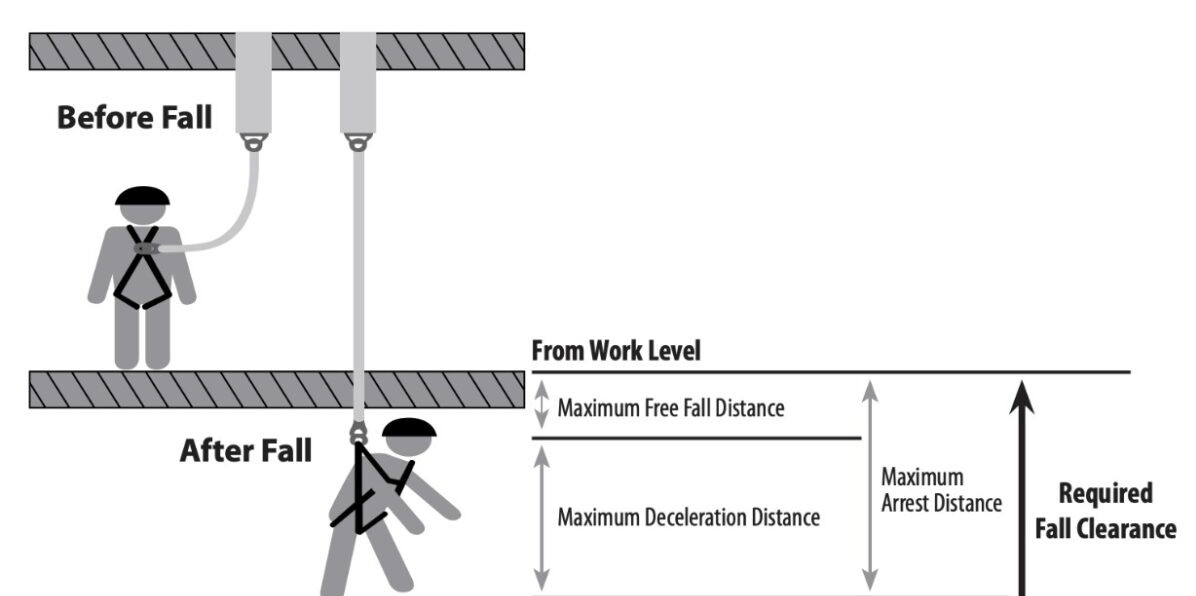
To account for the full Required Fall Clearance, what additional factor must be added?
Required fall clearance = maximum free fall distance + maximum deceleration distance +SAFETY FACTOR
Safety Factor = 3 feet

Where are Guardrails required?
Required on open-sided floors, platforms, and runways 4 feet or more above adjacent floor or ground level
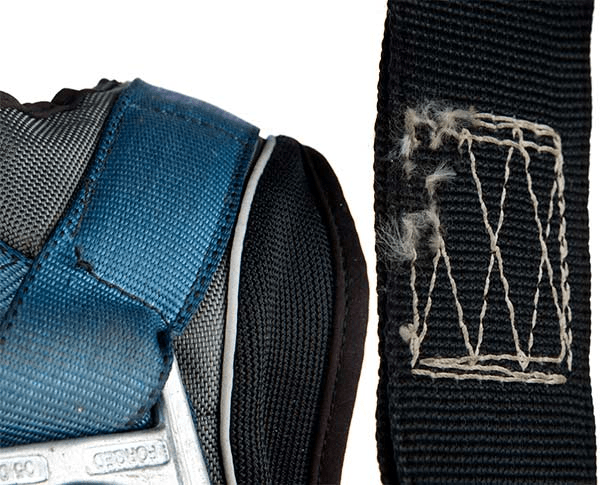 Does this harness pass inspection?
Does this harness pass inspection?
No. If stitching is missing or coming undone, the harness will be removed from service and destroyed.
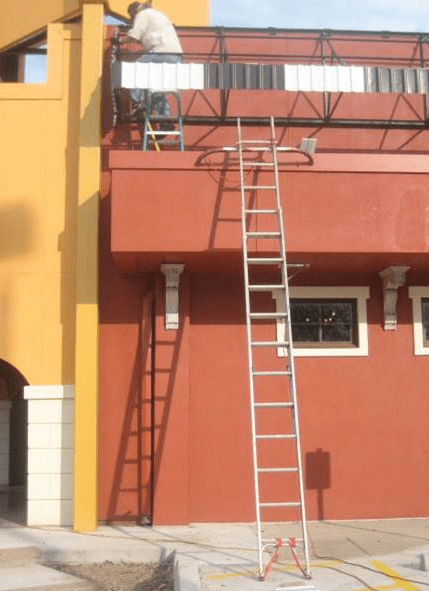
True or False: Extension ladder is adequate for workers moving from ground to elevated surface.
False. Extension ladder should extend past the roof by at least three feet.
A safety anchor must have the capability of supporting at least ________ pounds per employee attached.
5,000 lbs
If a welder certifies that a staircase design can support 700 lbs, is it safe and in compliance with OSHA standards?
No, must be able to support 5 times that expected load; minimum 1,000 lbs.
What item if missing will prevent a harness from passing inspection?
"Leg up" suspension trauma strap
What is the 4-to-1 rule as it pertains to extension ladders?
For every 4 rungs, place the ladder back 1 foot.
When would you use a beam clamp and yoyo lanyard combination?
moving into an area where you have structural steel above you (approved by safety) and you cannot reach with a manlift.
Choose two methods below used to prevent workers from falling more than 6 feet through a hole or gap.
a) personal fall arrest system
b) cover over top of hole or gap
c) guardrail system around hole or gap